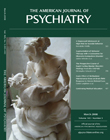Joy of Caring
I work at Harborview, a large county hospital. We’re part of a university, the part where many patients come off the streets. Most doctors are compassionate, but sometimes sheer patient numbers are too much and an exhausted resident chooses to punt. That’s what happened to “Mr. C,” and that’s when I took notice.
Mr. C, psychotic and raging, was detained in our psychiatric intensive care unit. Whether he was suffering from primary psychosis or just beleaguered by drugs and alcohol, his history featured years of delusions and incomprehensible ramblings, symptoms that often accompanied cocaine in his blood. How he would have responded to an antipsychotic was unknown because his prescriptions went unfilled. On our ward he silently glared or cursed. What made Mr. C noticeable in his stocking cap and too-large clothing was that he looked, well, sick .
The information gleaned from records revealed 2 years of emergency room visits. His repeated complaints: belly pain, nausea, and lately, vomiting blood. He never had adequate care. He’d abruptly leave or climb off the stretcher on his way to X-ray. If he stayed long enough for an exam and referral, he never kept a clinic appointment. Mr. C’s psychiatric history was just as deficient. He’d scream at his outpatient psychiatrist from the mental health center lobby, always refusing to be seen.
By some miracle of tact, a medical team convinced Mr. C to have an endoscopy in the week before psychiatric admission. Pathology: gastric adenocarcinoma. The consulting surgical resident advised a clinic appointment after discharge. “Unacceptable,” I decided, so I called the attending, who arranged preliminary tests to assess the extent of spread, and by another diplomatic marvel, Mr. C agreed to surgery.
The surgeon found him almost inoperable. The cancer was far too advanced.
This homeless man had spent decades on the streets or in prison. No relatives. No visitors. No callers. It was not right to be so sick and so utterly alone. But when he returned to the psychiatry service to convalesce, he had changed. The man had mellowed, and he was no longer psychotic. He had been told of the gravity of his illness. A new relationship formed between Mr. C and his care providers. Knowing there was no future brought out the sweetness of his nature.
Mr. C did not know the luxury of asking another person to grant his wishes. He could eat little but savored the taste of certain foods. Our team made a Friday afternoon excursion to Chinatown to bring him a duck and to McDonald’s for Big Macs. He asked me for cigarettes and then gently reminded me, after I had bought him that first pack, “Dr. Romm, you forgot the matches.” He liked to make his way to the front of the hospital and have a smoke. As he became increasingly weak, I’d help him downstairs at least once a day and take a student or resident along.
After the hospital, Mr. C went to a nursing facility. The nursing home was clean and pleasant. An elderly practical nurse showed kindness, but she was so busy and Mr. C said so little that I was concerned his needs would be missed. So I visited daily because there was no one else, and then his psychiatrists and students went with me. When the nausea and pain would not remit, he asked to return to Harborview. He trusted his hospital, he trusted us. Life had changed for Mr. C.
Mr. C was admitted for symptom control. He was so thin that he looked barely alive. Because each day seemed like it might be his last, everything we did for him became special. He asked for a quilt, and we brought him three. We put him in a wheelchair and took him out for a smoke. We sat on the hospital terrace and looked out at Puget Sound. The sun shone and a blanket of light, low clouds hadn’t yet cleared away. Then we spoke about dying.
We asked him what he’d like us to do after he was gone. He said that he had been proud to have been a Merchant Marine. His outpatient doctor brought poems that spoke of the sea and of death so he could choose what he’d like read at the funeral we’d make for him.
When I next saw Mr. C in the nursing home, his pain was intolerable. “I cannot stand this. You are my doctor. Help me die,” he begged. I took his hand. Tears filled my eyes. “I cannot do that,” I said. “Will you take me back to Harborview?” he asked through his tears. That was something I could do. He wanted his quilt in the ambulance. Even in the crowded, Friday night emergency room, a nurse quickly gave him intravenous morphine to dull his wretchedness.
Mr. C was admitted to the hospital. Nurses comforted him. His case manager and care providers visited. He got the juice and watermelon he requested but could not eat, and detaching his oxygen, we took him out for a last cigarette.
At life’s end, Mr. C was not alone. He valued his care, and we appreciated the change from the angry, psychotic substance abuser to this gentle, kindly man facing his last days. Mr. C had been homeless, cut family ties, and spent years high on drugs. He had lamented, “My life’s worth zero. I’ve done nothing for myself or anyone else.” “No, not true,” I replied. “You mean so much to all of us. You have given us the privilege and the joy of caring for you.”



